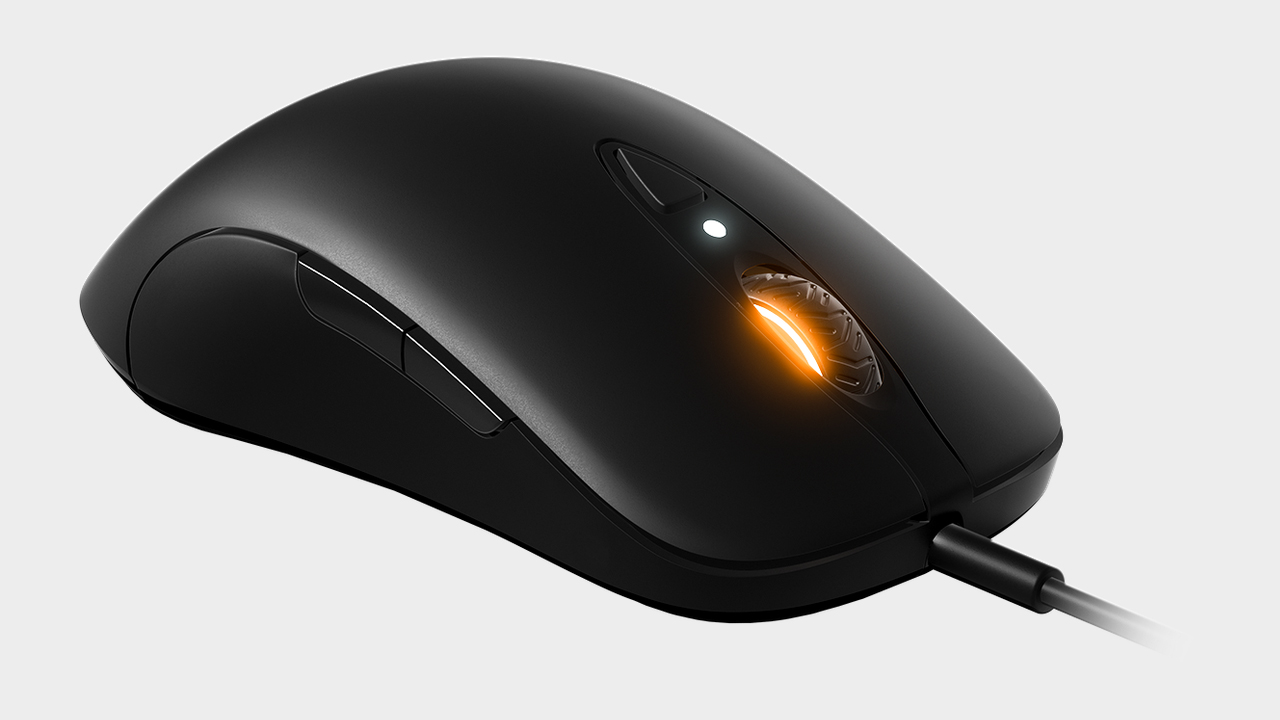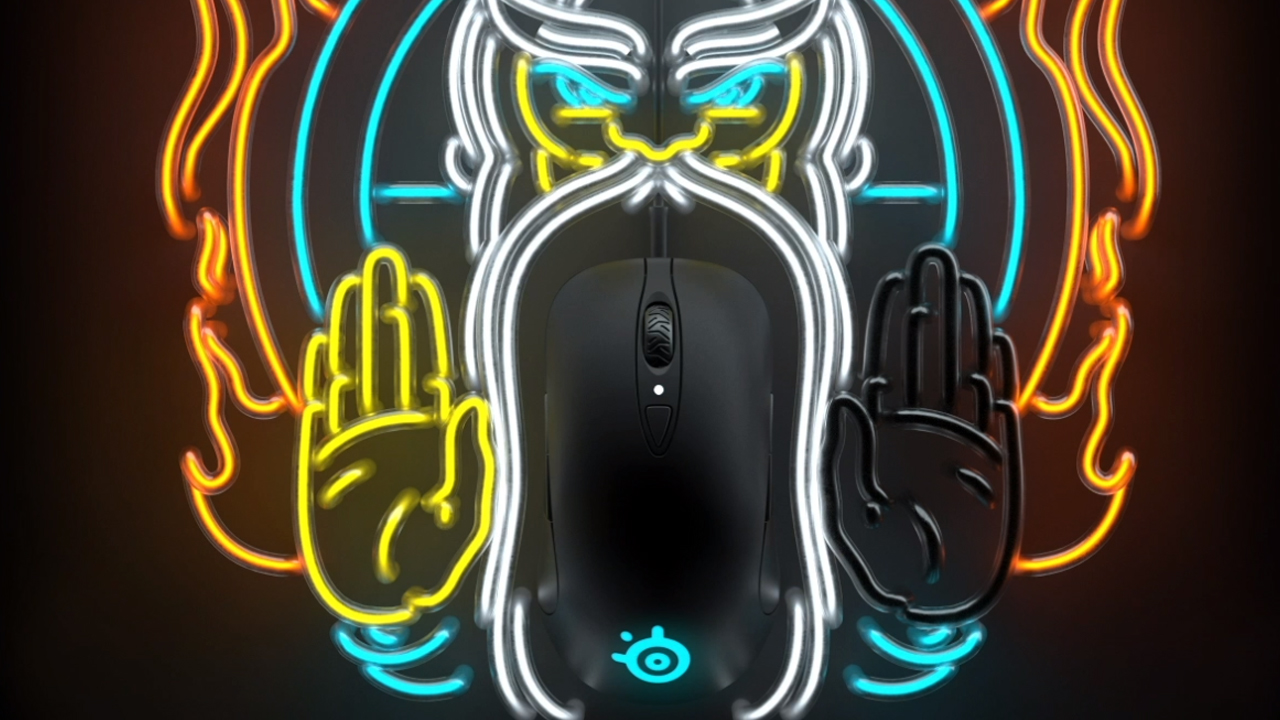GamesRadar+ Verdict
A brilliant ambidextrous mouse that falls short in just a few areas to prevent it from being one of the all-time greats
Pros
- +
Soft Touch material and design make it comfortable for any grip
- +
Widest DPI range of any SteelSeries mouse
- +
SteelSeries Engine 3 software is excellent
Cons
- -
Cable is poor quality
- -
Too light with no extra weight options
- -
Hard to reach all of the reprogrammable buttons
Why you can trust GamesRadar+
SteelSeries produces a vast array of excellent gaming products, from mice and keyboards to headsets, controllers, and even T-shirts. Their range of mice is especially impressive, with a wide variety of options depending on your preferences. The SteelSeries Sensei Ten is the latest product in this category and is perhaps the most accessible gaming mouse from the company to date. But where does it excel and where does it fall flat?
Features
Compare the Sensei Ten to any other SteelSeries mouse on paper and the immediate discerning feature is it being the only one so far to utilise the TrueMove Pro optical sensor. This means the Sensei Ten has the widest DPI range of any SteelSeries mouse, from 50-18,000 in 50 DPI increments. That's 6,000 higher than any other.
Aside from DPI, one of the most important aspects of a gaming mouse is how many reprogrammable buttons there are. The Sensei Ten has eight. Now this is a decent amount; two on the left-hand side, two on the right, the two main mouse buttons, the scroll wheel, and a middle button that defaults to DPI. The unfortunate problem here is that depending on what hand you're using, the two extra buttons on the side of the mouse (where your pinky lies) are hard to use without some practice. Manoeuvring your ring or pinky fingers to activate these can be a pain and is slightly uncomfortable, so in essence, the mouse only has six buttons.

When it comes to software, the SteelSeries Engine 3 program is what you'll be using - a nifty application that lists all of your SteelSeries products in a row and allows you to jump in and customise almost every aspect. For the Sensei Ten, it's simple to enter and adjust everything from macros and the reprogrammable buttons to the LED colours, patterns, DPI levels, polling rate... the list goes on. It's possibly one of the most accessible pieces of software for a mouse I've used - it's astoundingly simple to understand.
Design
The second you pick up the SteelSeries Sensei Ten, perhaps the most noticeable aspect is the "Soft Touch" outer material. Featured only in the SteelSeries Rival line of gaming mice until now, this is undoubtedly the comfiest mouse I've ever used. Soft to the touch and smooth to use, its all-black coating and symmetrical design also makes it one of the most aesthetically pleasing mice on the market.
This symmetrical design may seem like a purely aesthetic choice — and for those new to gaming mice, it might not appear noteworthy — but thanks to gaming mice offering extra reprogrammable buttons, it means left-handed gamers are able to use it without any discomfort at all. It can be frustrating for left-handed PC players to get used to a mouse in a market geared towards right-handed people, but the SteelSeries Sensei Ten aims to cater to both with this ambidextrous design. Now, I'm right-handed so I can't review the mouse from this angle, but I can appreciate what it's trying to do.
The other thing to mention when it comes to the design is the weight; 92g is heavier than a number of other mice on the market like the ASUS ROG Strix Impact II I reviewed not long ago, but it feels much lighter than that.
Unfortunately, a note needs to be made about the cable. Rather than opting for a tough braided cable like you'd find in a top-notch gaming mouse, the Sensei Ten cable is just rubberised, and not with a particularly strong rubber at that. I've only been using it for a week or two but there's no avoiding the fact that the cable may well be the first thing to falter here.
Performance
That said, the SteelSeries Sensei Ten is — without a shadow of a doubt — an impressive mouse. It glides along the mouse mat surface, looks outstanding in any setup, and has an impressively short travel time between clicks. Adjusting all of the settings has never been easier and you can even store your preferred settings within the mouse, so you can plug it in and play with any system and it'll remember your configurations.

The excellent tilt tracking also means that when you lift the mouse up and place it back down, there's little to no interference in the mouse position thanks to the TrueMove Pro.
It's also suitable for every grip, whether you're a claw, palm, or fingertip player, meaning it'll be comfortable no matter what. So where does the Sensei Ten trip up?
This criticism certainly won't apply to everyone, but my favourite mouse is the Logitech G502 (our guide names it as the best gaming mouse, too). It's much weightier, and those who prefer heavier mice may not be well served by the Sensei Ten. I often find when using it in tense situations or fast reflexive shooters, I grip too hard and accidentally lift the mouse from the table. This isn't ideal, even when you take into consideration the TrueMove Pro sensor alleviating most of the tracking errors. It's a small gripe to have but when it's happening frequently, it simply makes the Sensei Ten unsuitable for me personally.
There's also an issue when using the scroll wheel rapidly; the input is far too light and means that scrolling up or down a web browser quickly will cause the middle click to activate. It's not a huge problem but boy does it get irritating quickly.
Overall
While the Sensei Ten is possibly the best left-handed mouse available thanks to how ambidextrous it is, it is also fairly light with no extras to increase the weight. If there were a tier list of gaming mice, the Sensei Ten doesn't do enough to be put into the very top, S-rank level of mice, but it can comfily sit one below that at A-rank. And for those who like that lighter build, this may well be one of the top options out there.
Give me a game and I will write every "how to" I possibly can or die trying. When I'm not knee-deep in a game to write guides on, you'll find me hurtling round the track in F1, flinging balls on my phone in Pokemon Go, pretending to know what I'm doing in Football Manager, or clicking on heads in Valorant.




